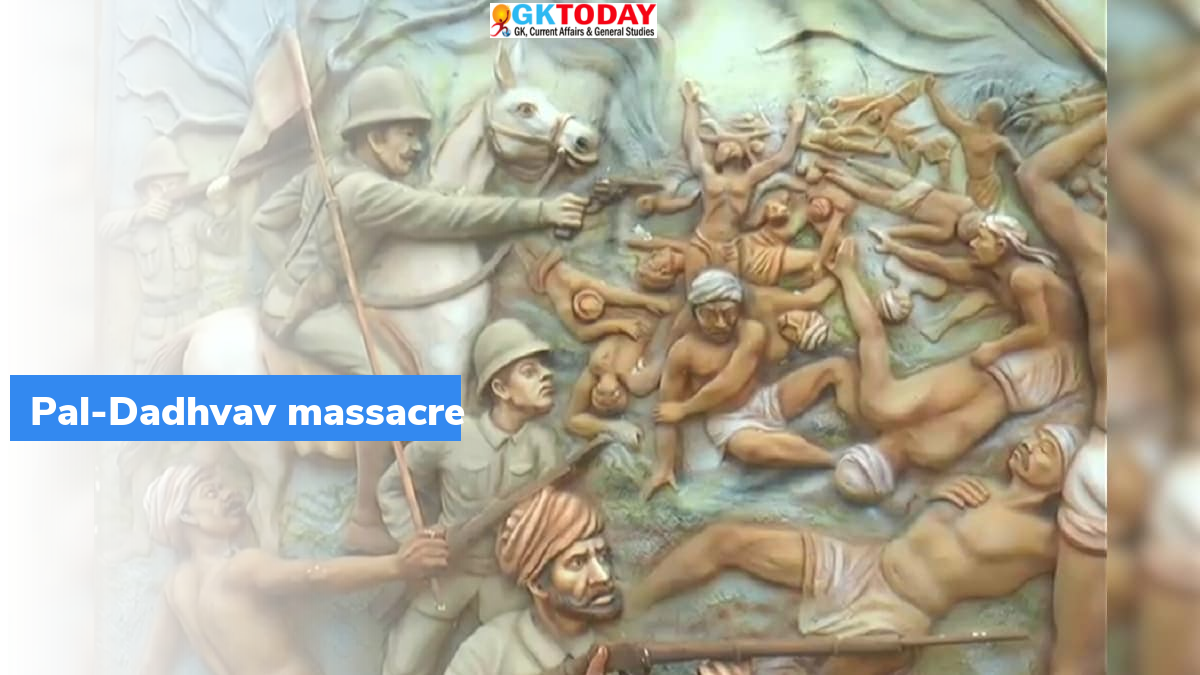Pal-Dadhvav massacre
On 7th March 2022, the government of Gujarat marked the 100 years of the Pal-Dadhvav massacre.
About the massacre
- Pal-Dadhvav massacre refers to the killing of around 1,200 tribal revolutionaries (Bhils) by the British. It happened on 7th March 1922, in the Pal-Chitariya and Dadhvaav villages of Sabarkantha district, then part of Idar state (present-day Gujarat state).
- On Amalki Ekadashi, villagers gathered on the banks of Heir River as part of the ‘Eki movement’. The Eki movement was led by Motilal Tejawat and the objective is to protest against the land revenue tax imposed on them by the British and feudal lords.
- Earlier, Udaipur state (Rajasthan) had outlawed Motilal Tejawat and announced an Rs-500 reward on his head. The Mewad Bhil Corps (MBC) of British was searching for Motilal Tejawat.
- MBC got information about the gathering of tribals and they went to the spot. As the tribals raised slogans against the land revenue tax, British soldiers fired bullets on them.
- Number of tribals killed is not accurately known. The British claim that 22 people were killed. But the tribals believe that around 1,200 of them died.
- According to the government of Gujarat, the Pal-Dadhvav massacre is bigger than the Jallianwala Bagh incident, 1919. In the Jallianwala Bagh massacre, 500-1,000 people are said to have been killed after General Dyer’s forces opened fire.
Memorial and Republic Day tableau
In 2003, a memorial to Motilal Tejawat was built on the massacre site. The memorial was surrounded by a ‘Shahid Smriti Van’, which consists of 1200 trees planted in the memory of the tribals. Pal-Dadhvav massacre was also featured on Gujarat’s 2022 Republic Day tableau.
Month: Current Affairs - March, 2022
Category: Important Days & Events Current Affairs


